Featured Articles
The 7 Habits of Highly Effective People, as Personified By Bernard Hopkins

Boxing and the self-help industry are not a natural fit. One is brutal, violent sport unwelcoming to a business of workbooks and touchy-feely seminars. Yet continuous self-improvement is crucial to competing at the highest level in the ring and if both sides were willing to let down their guards, there could be some great connections. Dale Carnegie would probably have embraced the legendary personal kindness that Jack Dempsey and Muhammad Ali showed to others. Daniel Pink could find amazing case studies in the motivation behind the grueling training regimens of Rocky Marciano and Joe Frazier. However, the greatest match ever would be with Stephen Covey and Bernard Hopkins.
Covey, who passed away in 2012, is best remembered for his landmark book, “The 7 Habits of Highly Effective People.” For the past 25 years, this book has guided millions of people who have wished to become simply better in their lives. To my knowledge, it has never been applied to the sweet science. When one does, there are numerous boxers one can find that embrace these habits, but Hopkins may be the most effective boxer in history. As the 49-year-old former undisputed middleweight champion and current IBF light heavyweight champ prepares for Saturday’s bout with Beibut Shumenov, it is worth exploring how Hopkins embodies Covey’s seven habits.
Habit 1: Be Proactive
The first three habits focus on personal victories and gaining independence and control. Covey writes that, “[Proactive people] work on things they can do something about.” For Hopkins, that has meant staying in top physical condition and maintaining a strict training regimen. He has been fighting for 25 years and has been a titleholder for more than half of them. A fighter does not accomplish that by abusing his body and gaining and losing a lot of weight. He does it by proactively hitting the gym every day.
Habit 2: Begin With the End in Mind
Hopkins entered the fight game at the relatively late age of 23 because of a five-year stint in prison. He began his career as a light heavyweight and lost his professional debut in October of 1988. Instead of walking away or getting discouraged, Hopkins sought the tutelage of Philadelphia trainer Bouie Fisher, who determined Hopkins would be more suited competing as a middleweight.
“He came to our gym straight out of jail and with an 0-1 record,” Fisher said in 1995. “Bernard was smaller than he is today, but he knew what we wanted here and he did what he was told in camp. He did not want anything bad from the streets.”
Of course, one’s ultimate goal evolves over a 25-year career, but Hopkins began his career with the end result of not going back to the streets in his mind and has maintained that type of focus ever since.
Habit 3: Put First Things First
The history of pugilism is full of fighters who destroyed their careers through booze, drugs, gargantuan meals, chasing women, and lavish lifestyles. Hopkins is not one of them. He seems to put three things first in his life: his family, his finances and his career. He has been married for more than 20 years and managed his finances to the point where he was bagging his own groceries when he was a millionaire. Hopkins is also very strict about what he puts into his body. He does not drink, smoke, do drugs or eat things that do not agree with his health. It is a level of self-discipline that few people are able to achieve.
Habit 4: Think Win-Win
Covey’s next three habits are about establishing interdependence with colleagues. Thinking win-win may not apply directly to boxing matches, but it does to making them happen. To be successful with this habit, one also has to appreciate what he is worth and not compromise that. After winning the middleweight title in 1995, Hopkins defended his title with lower paydays than some of his contemporaries were earning and turned down numerous blockbuster fights because he did not feel that he was offered enough money.
Finally, Hopkins agreed to face Oscar De La Hoya in 2004 for $10 million. Critics at the time wondered why Hopkins had turned down so many other mega-fights and he explained that he knew what he was worth and would not risk his health or title for anything less. De La Hoya also thought win-win in the situation. After Hopkins knocked him out, De La Hoya invited him to be a partner in his Golden Boy Promotions and manage the East Coast side of the business.
Habit 5: Seek First to Understand, Then to Be Understood
This habit centers on people skills, which in the ring is about as useful as proficiency in Microsoft Office. Though if one looks at how Hopkins performs in the squared circle, it is clear that he methodically works to understand his opponents before attacking them. The approach is not always pleasing to boxing fans. Hopkins has not knocked an opponent out since De La Hoya. In his next bout against Howard Eastman, his record 20th middleweight title defense, Hopkins used the first six rounds to study his challenger before using the final six to close the deal.
As he has gotten older, Hopkins has used this approach more and more. Today, he averages only 39 punches a round, the least of any fighter today, and the result is often a close decision. One cannot always call it pretty, but no one can deny its effectiveness.
Habit 6: Synergize
Covey wrote, “All the habits we have covered prepare us to create the miracle of synergy.” In seminars, synergy is the highest form of principle-centered leadership. For Hopkins, his embrace of the previous five habits allows him to continue to compete at the highest level against fighters who are at least a decade younger than him.
Habit 7: Sharpen the Saw
After knocking out Segundo Mercado in April of 1995 to win the IBF Middleweight title, Hopkins immediately watched film of the bout.
“I just wanted to see what I did wrong,” he said.
That continued self-evaluation, improvement and evolution has allowed him to continue on after many fighters cannot. Hopkins is not the same fighter who knocked out Mercado nor the same boxer who knocked out Felix Trinidad in 2001 nor the one who stopped De La Hoya. Nevertheless, he continues to be introspective and adapt to the fight game in a way that works for him.
Of course, self-improvement case studies are not biographies and boxing fans can still note that Hopkins success and interactions have not come without controversy. While some may voice these frustrations, no one can argue against his effectiveness as an all-time great fighter.
-

 Book Review4 weeks ago
Book Review4 weeks agoMark Kriegel’s New Book About Mike Tyson is a Must-Read
-
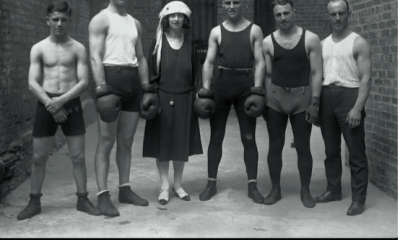
 Featured Articles2 weeks ago
Featured Articles2 weeks agoThe Hauser Report: Debunking Two Myths and Other Notes
-
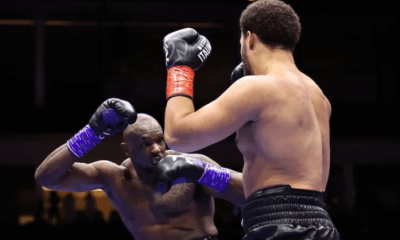
 Featured Articles3 weeks ago
Featured Articles3 weeks agoMoses Itauma Continues his Rapid Rise; Steamrolls Dillian Whyte in Riyadh
-
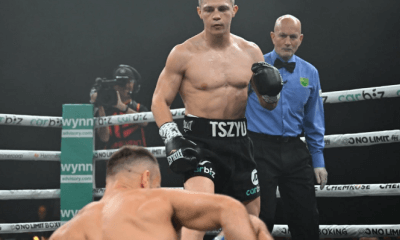
 Featured Articles3 weeks ago
Featured Articles3 weeks agoNikita Tszyu and Australia’s Short-Lived Boxing Renaissance
-
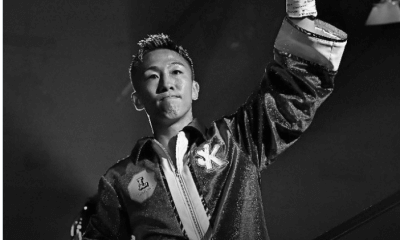
 Featured Articles4 weeks ago
Featured Articles4 weeks agoKotari and Urakawa – Two Fatalities on the Same Card in Japan: Boxing’s Darkest Day
-

 Featured Articles3 weeks ago
Featured Articles3 weeks agoIs Moses Itauma the Next Mike Tyson?
-
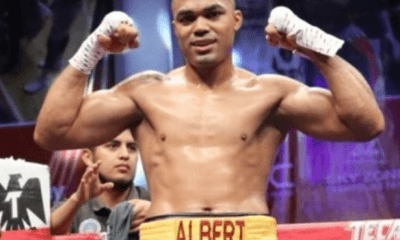
 Featured Articles4 weeks ago
Featured Articles4 weeks agoRamirez and Cuello Score KOs in Libya; Fonseca Upsets Oumiha
-

 Featured Articles2 weeks ago
Featured Articles2 weeks agoBoxing Odds and Ends: Paul vs ‘Tank,’ Big Trouble for Marselles Brown and More















